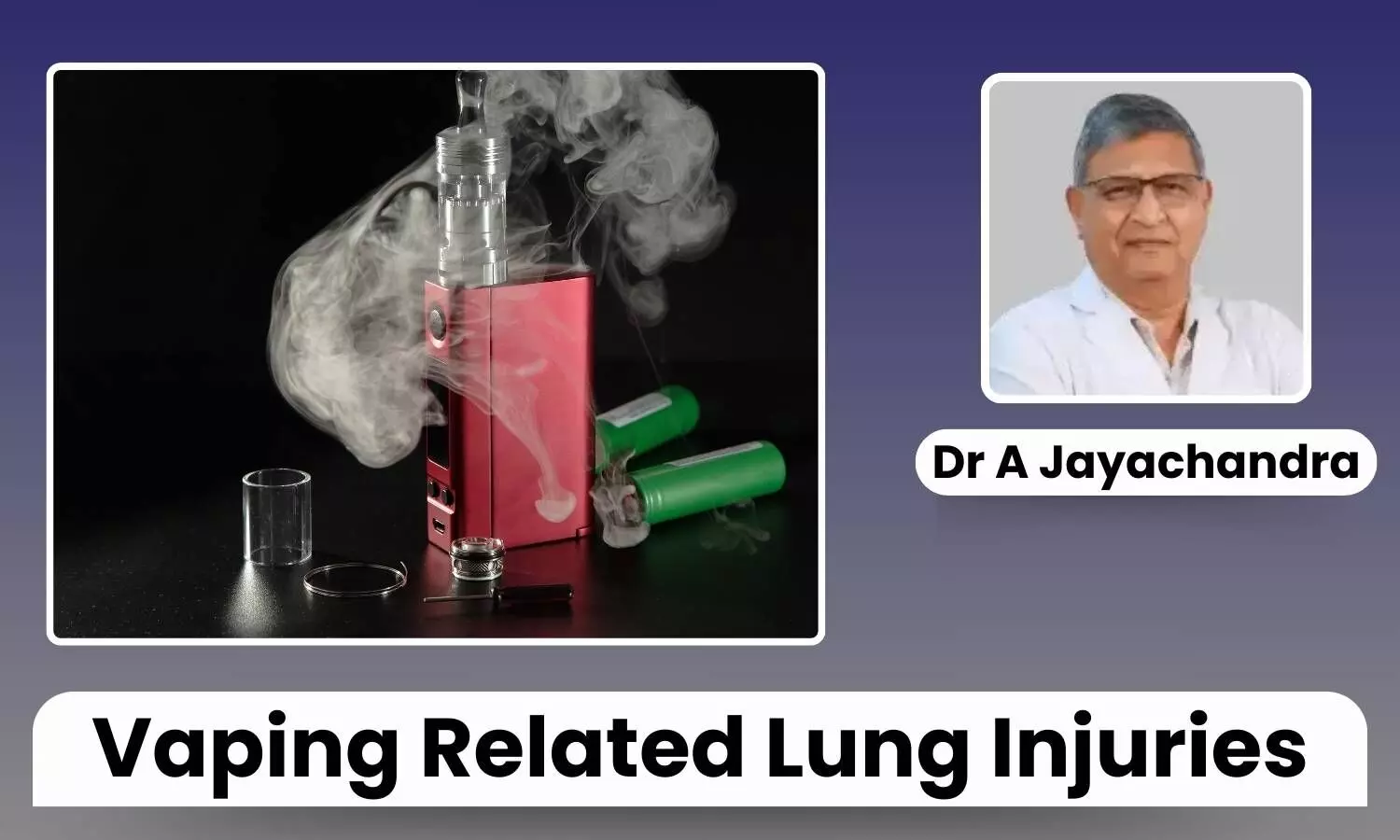Rise of Vaping Related Lung Injuries: Key Facts on New Pulmonary Threat - Dr A Jayachandra

In recent years, vaping has emerged as a popular alternative to traditional smoking, particularly among younger demographics. Marketed as a safer option and a tool for smoking cessation, e-cigarettes and vaping devices have gained widespread acceptance.
However, we had increasingly raised alarms about a new and growing health concern: vaping-related lung injuries.
What is Vaping?
Electronic vaporizers involve heating specialized liquids into an aerosol inhaled by users. Referred to as "e-cigarettes", these battery-operated devices were initially designed to mimic smoking through vapour rather than smoke, targeting smokers wishing to reduce harm.
Yet over time, vaping has expanded into a cultural phenomenon, with diverse products and flavours marketing to a broad range of consumers beyond just smoking cessation.
Emergence of Vaping-Associated Lung Injuries
The identification of vaping-associated lung injuries, collectively called EVALI (E-cigarette or Vaping-Associated Lung Injury), has raised acute worries among medical professionals. First reported in the United States in 2019, cases have since appeared globally.
Patients often experience:
- Persistent coughing
- Shortness of breath
- Chest pain
- Fatigue
- Fever or chills
- Gastrointestinal symptoms like nausea, vomiting, and diarrhoea
These symptoms often mimic other respiratory illnesses, making diagnosis challenging.
What Causes Vaping-Related Lung Injuries?
There has been considerable research into the precise mechanisms contributing to vaping-induced lung afflictions, though the causes remain incompletely understood. A number of factors have emerged as likely contributors to EVALI cases:
1. Vitamin E Acetate: Vitamin E acetate, commonly used as a thickening element in illicit cannabis vapour products known as dabs or cartridges, has shown a robust link with injured lungs. When inhaled deeply into the recesses of the respiratory system, it can disrupt standard pulmonary activity.
2. Toxic Chemicals: The mists exhaled from electronic nicotine delivery systems contain a brew of chemicals including formaldehyde and acrolein, both historically tied to damaged lung tissue. Diacetyl, an artificial butter flavouring, is another component raising concern due to established ties to harmed lung health.
3. Nicotine Addiction and Overuse: While nicotine alone is not directly implicated in the observed lung harms, its highly addictive nature can promote extensive vaping that magnifies exposure to the above harmful constituents over prolonged periods.
4. Device Malfunctions: Faulty vaporizer mechanisms that permit inhalation of usually small amounts of metals like lead, nickel and chromium into delicate lung tissue provide another potential cause requiring more examination
Who is at Risk?
While vaping-related lung injuries can affect anyone, certain groups are more vulnerable:
- Adolescents and Young Adults: This demographic represents the largest group of e-cigarette users, driven by targeted marketing, appealing flavours, and peer influence.
- Pre-existing Lung Conditions: Individuals with asthma, chronic obstructive pulmonary disease (COPD), or other lung diseases are particularly susceptible to vaping-related complications.
- Users of Illicit Products: Black-market vaping products, especially those containing THC, pose a significantly higher risk of lung injury.
Long-Term Implications
One concern is the potential for lasting effects. While some patients fully recuperate, others experience lasting scarring or diminished lung capacity. Further, nicotine addiction can progress vaping practices and amplify contact with the damaging components discussed over the lengthy term.
Role of Healthcare Providers
As a pulmonologist, I have witnessed first hand the devastating effects of vaping-related lung injuries. Early diagnosis and intervention are crucial for effective treatment. Healthcare providers play a vital role in:
1. Raising Awareness: Educating patients, particularly young people, about the risks of vaping is critical to prevention.
2. Screening and Diagnosis: Given the overlap of symptoms with other respiratory illnesses, a thorough clinical history and imaging studies such as chest X-rays or CT scans are essential for accurate diagnosis.
3. Management and Treatment: Treatment typically involves supportive care, including oxygen therapy and corticosteroids to reduce inflammation. Severe cases may require mechanical ventilation.
4. Advocacy for Regulation: Healthcare professionals must advocate for stricter regulations on vaping products, including better labelling, quality control, and restrictions on advertising to vulnerable populations.
Steps to Protect Yourself and Your Loved Ones
If you or someone you know uses vaping devices, consider the following steps to minimize risk:
- Avoid Illicit Products: Steer clear of unregulated or black-market vaping products, especially those containing THC.
- Know the Ingredients: Use only trusted products and be aware of their chemical composition.
- Monitor Symptoms: Seek medical attention immediately if you experience any respiratory symptoms after vaping.
- Consider Quitting: Consult a healthcare provider for support and resources to quit vaping.
Need for Broader Awareness
The rise of vaping-related lung injuries underscores the importance of proactive public health measures. Educational campaigns targeting schools, colleges, and workplaces can go a long way in dispelling myths about the safety of vaping. Policymakers must also step up to address gaps in regulation and enforcement.
Conclusion
Vaping became popularized as a safer substitute to smoking, yet its proliferation revealed unforeseen medical issues. The proliferation of vaping-associated lung injuries serves as a stark reminder that inhaling foreign substances can lead to serious consequences regardless of intent.
As a pulmonologist, my clear message to the community remains: make informed decisions that prioritize lung wellness above all else.
Disclaimer: The views expressed in this article are of the author and not of Health Dialogues. The Editorial/Content team of Health Dialogues has not contributed to the writing/editing/packaging of this article.


